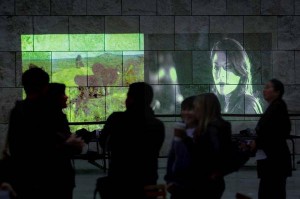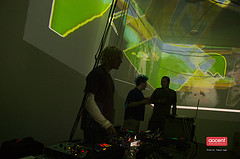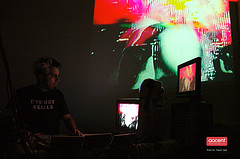Log in with us and start curating your own playlists!
FREE ASSOCIATIONS
FREE ASSOCIATIONS is an excellent way to share your interests with your community.
Use our playlist interface to help you organize a screening party. Think YouTube but art’ed up! (…and without the cat videos)

WHY SHOULD YOU DO IT?
FOR POLITICAL ACTIVISTS
Get inspired by artists who change the world
FOR ASPIRING CURATORS
Practice curating a selection of media art and get instant feedback
FOR EDUCATORS
Spice up your teaching materials
FOR STUDENTS
Share your interests with classmates and friends
FOR ARTISTS
Proliferate cutting-edge media art
FOR EXPERIMENTAL ART ORGANIZATIONS
Obtain curated content to present to your audiences
FOR SOCIAL JUSTICE AND YOUTH ORGANIZATIONS
Use media art as a vehicle for the social changes you care about
FOR HISTORIANS
Research important historical moments through the eyes of artists
FOR MEDIA ART LOVERS
Share the love!

HOW DO YOU DO IT?
An appropriate location
A selection of videos that matches your expected audience.
A method of screening the videos (computer & speakers OR projector and screening surface)
Possibly program notes
A list of discussion questions
Enough chairs or other comfortable places to sit
Snacks & drinks (recommended)




PLANNING YOUR PARTY
Get Started! We offer you 10 simple tips to help you organize your very own screening:
1. MATCH ART TO AUDIENCE
Match the right selection of pieces to the right audience. If you have a great program that has been assembled for the wrong audience, then your event could alienate them. For example, you may not want to screen a program about tree huggers to a group of loggers. Select pieces that challenge your target audience, but not so inaccessible that they will mentally check out. While it’s certainly important to be clear about your own goals for the evening, it’s also important to address your audience’s sensibilities. Make sure your audience is clear about the nature of the films you are going to screen.
2. GO BIG OR GO SMALL
Decide on how many people you want to attend your screening. Are you planning a small gathering in your home? Or do you envision a large screening elsewhere? If you spread the word widely, set an RSVP date so you’re not overrun with too many guests and not enough chairs.
3. CHOOSE YOUR PRESENTATION FORMAT WISELY
Contextualize the pieces with the appropriate presentation format. Some of the films were intended to be installation pieces or experimental projections. Be creative about your exhibition format! But remember, being creative doesn’t mean you need a huge budget or an elaborate set-up: you could screen on your roof or inside a closet or somewhere else if you feel that relates to the videos! Just make sure that the videos you choose fit the exhibition style you design. Locations help viewers understand the art because they contextualize the pieces.
4. DISCUSSION OR AFTER PARTY?
Decide on a formal or informal gathering. You can discuss the work in a less academic format. Make it a potluck or arrange an after party at a pre-arranged space (bar, coffee shop, etc).
5. FORMAT YOUR DISCUSSION
Prepare specific questions that will facilitate a group discussion. Chances are people will want to talk about what they just saw. Start with an icebreaker question to loosen people up. Invite your audience to share their perspectives. Use the program notes to guide you if you need help coming up with good discussion questions. Encourage differences of opinion—and civility!
6. TEST YOUR EQUIPMENT AHEAD OF TIME
Make sure you know what equipment you need. Do you need a projector to show the work on a wall or will a 20-inch TV (plus DVD or laptop) suffice? Set up your equipment at your location the night before. Try everything out before your audience arrives. If something doesn’t work, you’ll be much calmer if you have enough time to fix it. If it is a large enough audience, consider inviting someone to handle the tech side of things while you give an introduction the screening.
7. ASK FOR HELP IF YOU NEED IT
Work with a team of people who believe in you. It may sound cliché, but sometimes two heads really are better than one. This especially applies if your ideas are very ambitious or difficult to orchestrate. Keep yourself open to new ideas, and don’t be afraid to ask for advice from a friend, a family member, or someone else you trust.
8. PAY ATTENTION TO THE DETAILS
Coordinate the details before your event takes place. You can definitely plan an event with a feeling of spontaneity. But if you coordinate carefully, then it’s much more likely that your event will be a success. Are you going to serve food or drinks? Is your screening going to accompany a parallel event, like a bike ride or picnic or beach day?
9. BE TRUE TO YOUR VISION
Know what you want audiences to take away from their evening. What do you want to accomplish with your screening? What do you want your audience to remember? A specific issue or theme? If you are working with a team of fellow curators, chances are each of them has their own goals. Get clear as a group what you are trying to achieve. But it’s okay if things don’t go exactly the way you planned. Be flexible, improvise if you need to, and have fun!
